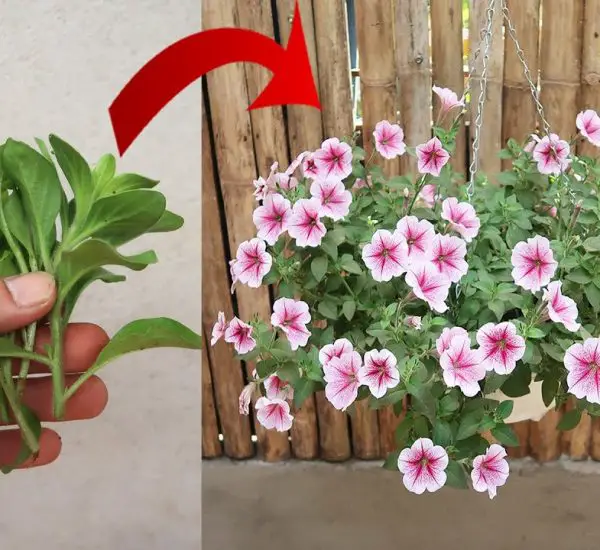Hydrangeas are beloved for their large, vibrant flowers and lush foliage. These stunning plants can be a bit tricky to grow, but with the right care and a few creative tricks, you can cultivate healthy, thriving hydrangeas that bloom beautifully year after year. One such method is using leaves and bananas as natural fertilizers to enhance growth and flower production.

In this article, we’ll explore how leaves and bananas can be utilized to support the health of your hydrangeas and encourage them to grow and bloom more abundantly.
Why Use Leaves and Bananas for Hydrangeas?
Hydrangeas thrive in nutrient-rich soil, and bananas and leaves can provide an organic and eco-friendly way to enhance soil quality. Here’s how these two natural ingredients benefit hydrangeas:
- Bananas are rich in potassium, phosphorus, and calcium, which promote strong root development, vibrant blooms, and overall plant health. Potassium is especially important for flower production and helps the plant tolerate stress.
- Leaves, especially decaying leaves, are a great source of organic matter. They decompose into valuable compost, improving soil structure and moisture retention. They also provide important nutrients like nitrogen, which encourages lush growth and healthy foliage.
How to Use Leaves and Bananas to Grow Hydrangeas
Materials Needed:
- A few banana peels
- Leaves (preferably from deciduous trees like oak, maple, or beech)
- Garden soil or potted mix
- Water (to hydrate the soil)
Method 1: Banana Peel Fertilizer
- Prepare the Banana Peels:
- Take 2-3 banana peels (organic bananas are ideal) and cut them into small pieces.
- Bury the Peels:
- Dig a small hole around the base of your hydrangea plant, about 2-3 inches deep. Place the chopped banana peels into the hole, and cover them with soil. As the banana peels break down, they will release essential potassium and phosphorus into the soil, feeding your hydrangea.
- Water the Plant:
- After burying the banana peels, water the area thoroughly to help the nutrients dissolve and reach the plant’s roots.
- Repeat Every Few Months:
- Reapply banana peels every 3 months or so, especially during the growing season. This helps maintain a steady supply of nutrients for your hydrangea.
Method 2: Leaf Mulch
- Collect Leaves:
- Gather leaves from your yard or garden. Deciduous leaves, such as from oak or maple trees, work best because they break down easily.
- Shred the Leaves:
- Shredding the leaves into smaller pieces allows them to break down faster and release their nutrients into the soil.
- Apply the Leaf Mulch:
- Spread the shredded leaves around the base of your hydrangea plant, forming a mulch layer about 2-3 inches thick. Be careful not to pile the leaves directly against the plant’s stem to avoid rot.
- Water the Mulch:
- Water the leaf mulch lightly to help it settle into the soil. The leaves will decompose over time, enriching the soil with valuable organic matter and nutrients, especially nitrogen, which supports healthy growth.
Method 3: Banana and Leaf Compost
- Create a Compost Pile:
- Combine banana peels with shredded leaves in a compost pile. Turn the compost every few weeks to help it break down evenly.
- Apply the Finished Compost:
- Once the compost has matured, spread it around your hydrangea’s root zone. This nutrient-dense mixture will improve soil fertility and enhance your plant’s growth.
Benefits of Using Leaves and Bananas for Hydrangeas
- Stronger Roots: The potassium and phosphorus from bananas help develop stronger, more robust roots.
- Vibrant Blooms: Potassium is essential for flower production, and using banana peels ensures your hydrangeas bloom in beautiful, vibrant colors.
- Improved Soil: The organic matter from leaves creates a healthier soil structure, improving water retention, aeration, and nutrient availability.
- Sustainable Gardening: By using natural fertilizers like leaves and bananas, you’re reducing waste and creating an eco-friendly garden.
- Affordable Solution: Leaves and banana peels are cost-effective resources that you can easily collect from your garden or kitchen, saving you money on commercial fertilizers.
Tips for Best Results
- Balance the Nutrients: While bananas are rich in potassium and phosphorus, they lack nitrogen, which is also crucial for plant growth. Ensure you supplement with nitrogen-rich fertilizers if needed, or rely on the natural nitrogen from leaf mulch.
- Do Not Overapply: While natural fertilizers are beneficial, overusing banana peels or leaves can overwhelm the plant. Use them in moderation and watch how your hydrangea responds.
- Choose the Right Time: Apply banana peels and leaf mulch during the growing season, preferably in early spring or late fall, when hydrangeas need nutrients the most.
- Use Shredded Leaves: Shredding the leaves helps speed up the decomposition process, providing faster nutrient availability.
Conclusion: A Natural Boost for Hydrangeas
Using banana peels and leaves as natural fertilizers is an easy, sustainable way to enhance the health and beauty of your hydrangeas. These natural materials provide essential nutrients like potassium, phosphorus, and nitrogen, promoting strong roots, lush foliage, and vibrant blooms. By incorporating these simple techniques into your gardening routine, you can grow thriving hydrangeas that will bloom beautifully year after year! 🌸🌿



